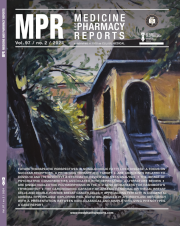Exploring the contrasts: in-depth analysis of human and canine mammary tumors - discoveries at the frontier
DOI:
https://doi.org/10.15386/mpr-2733Keywords:
human breast cancer (HBC), canine breast cancer (CBC), immune system, immunotherapy, comparative oncology, translational researchAbstract
We have examined genomic and transcriptomic abnormalities in human and canine samples to evaluate the canine model’s validity for breast cancer research, emphasizing similarities and differences. Both species commonly utilize serum tumor markers and noncoding microRNAs. Immunohistochemistry and immunocytochemistry were employed to illustrate and compare results based on histological diagnoses. In addition to these factors, similarities exist in spontaneous tumor occurrence, age of onset, hormonal influences, and disease progression, including tumor size, clinical stage, and lymph node involvement. Molecular traits such as hormone receptor status, Epidermal Growth Factor Receptor (EGFR), and proliferation markers (Ki67) further endorse the canine model’s utility in breast cancer studies. The advancement of technologies facilitates the identification of new cancer-associated molecules, both coding and non-coding genes, underscoring their potential as prognostic/diagnostic biomarkers and therapeutic targets.
Downloads
Published
How to Cite
Issue
Section
License
The authors are required to transfer the copyright of the published paper to the journal. This is done by agreeing to sign the Copyright Assignment Form. Whenever the case, authors are also required to send permissions to reproduce material (such as illustrations) from the copyright holder.

The papers published in the journal are licensed under a Creative Commons Attribution-NonCommercial-NoDerivatives 4.0 International License.

